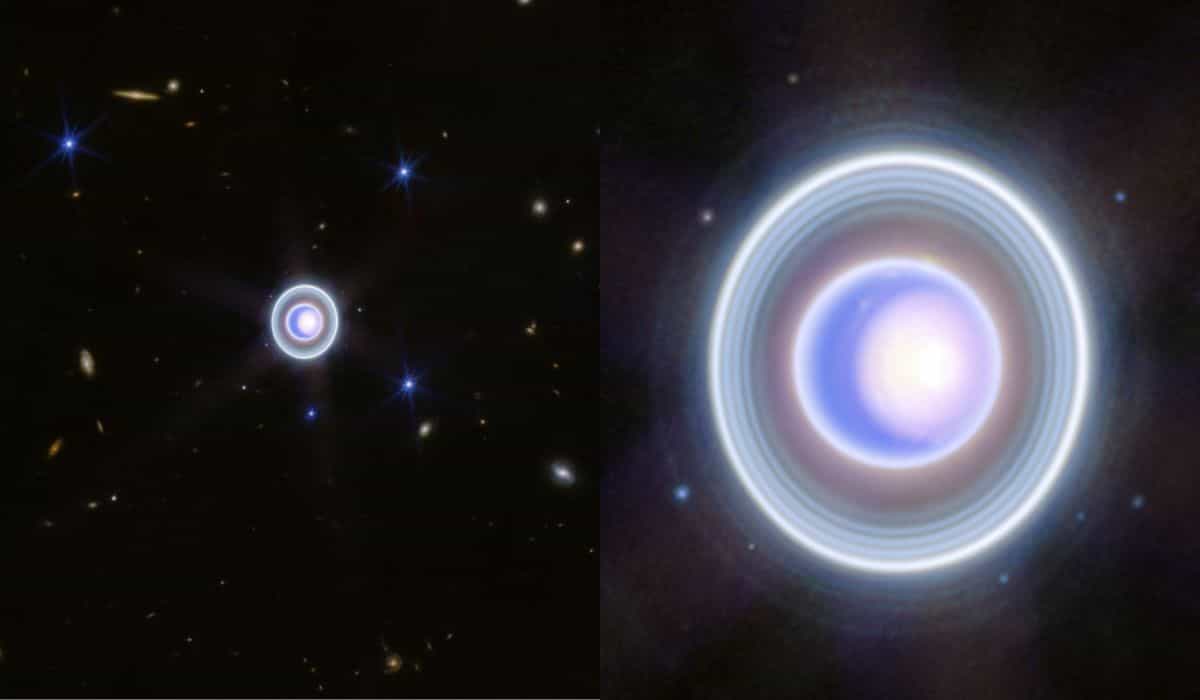
The James Webb Space Telescope focused its attention on Uranus and managed to capture beautiful detailed images of the ice planet, its rings, moons, and atmospheric features, including a seasonal polar cap.
+Streamer banned from Twitch after going shirtless in live stream
+Hubble Highlights Image of Irregular Galaxy Millions of Light-Years from Earth
According to NASA and ESA, the unique sensitivity of Webb revealed inner and outer rings, highlighting the Zeta ring and even capturing small moons between the rings. The telescope’s infrared image unveiled a dynamic and peculiar icy world, showcasing the polar cap and bright storms, providing insights into the planet’s complex atmosphere.
Additionally, due to Uranus’s unique tilt, spinning on its side, the planet experiences the most extreme seasons in the Solar System, with a quarter of the year immersed in a 21-year-long winter. Webb offers an unprecedented view, revealing details that were previously invisible, such as the evolution of the polar cap.
The new images reveal detailed features of Uranus’s seasonal north polar cap, as well as bright storms near and below the southern border of the cap. If humans want to send a spacecraft to visit Uranus up close, it’s necessary to understand how to navigate debris from its rings. pic.twitter.com/tvqcZCYTwD
— NASA Webb Telescope (@NASAWebb) December 18, 2023

